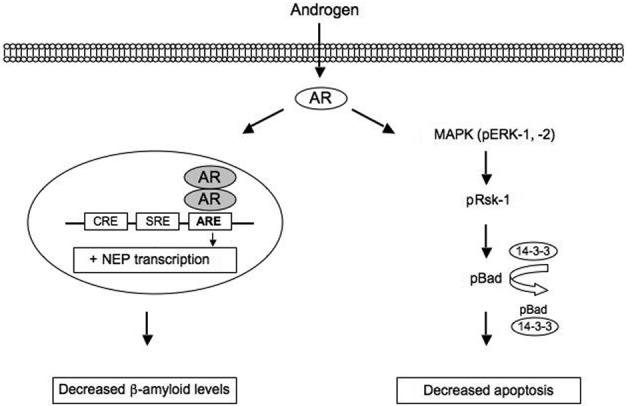Figure 3.

Recent studies in our laboratory indicated two AR-dependent protective pathways. First, androgens decrease levels of the AD-related protein Aβ by a classic genomic mechanism involving activated AR interaction with ARE sites on the neprilysin gene, which results in increased expression of this Aβ-catabolizing enzyme. Second, we find that androgens reduce neuronal apoptosis by an AR-dependent, non-genomic signaling cascade involving activation of MAPK/ERK, followed by activating phosphorylation (p) of Rsk, and inactivating phosphorylation of the pro-apoptotic protein Bad. Both pathways appear to involve activation of intracellular rather than membrane-associated AR.
